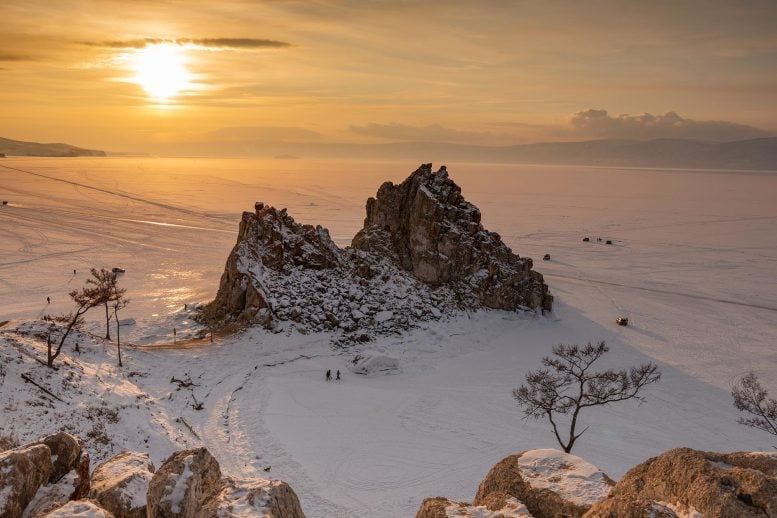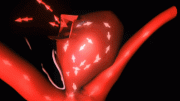
The scientists found evidence of past demographic events that affected the entire Lake Baikal region.
Northeastern Asia has a complex history of migrations and plague outbursts. That is the essence of an international archaeogenetic study published in Science Advances and lead from the Department of Archaeology and Classical Studies at Stockholm University. Genomic data from archaeological remains from 40 individuals excavated in northeastern Asia were explored in the study.
“It is striking that we find everything here, continuity as well as recurrent migrations and also disease-related bacteria,” says Anders Götherström, professor at the Center for Palaeogenetics at Stockholm University and one of the Principal investigators of the study.
The scientists discovered that there were demographic events in the past common for the whole Lake Baikal region. For example, around 8300 years ago there was a migratory event discernible both east and west of Lake Baikal. But there were also events specific for each of the two areas. While the areas west of Lake Baikal provide evidence for recurrent migrations and intense mobility, the areas east of Lake Baikal preserved a long-term continuity for thousands of years, apparently with limited mobility from other areas.
“It is intriguing that our data reveals complex and contrasting patterns of demographic change in one of the least populated regions on earth; including notable gene flow and at the same time a genetic continuity without major demographic changes in the two areas around Lake Baikal,” says lead-author Gulsah Merve Kilinc, former postdoctoral researcher at the Department of Archaeology and Classical Studies at Stockholm University and currently Lecturer at Department of Bioinformatics at Hacettepe University in Ankara.
The study also provides some new clues to the history of the Paleo-Inuit groups, the people who inhabited northern Greenland and Canada. While it has been suspected that the so-called Belkachi-complex, a cultural group in the Baikal area, played a part in the early history of Paleo-Inuits, it has not been possible to evaluate this in detail. The analyses of remains of an individual associated with the Belkachi cultural-complex, dated to more than 6000 years before present now show that there is an association to a previously published Paleo Inuit (Saqqaq) individual (dated c.4000 yrs BP) on Greenland.
“This is the first genetic evidence of a link between a Neolithic period human group in Yakutia and the later Palaeo-Inuit groups, and this will inspire to new of research on the demographic development,” says Jan Storå, Professor at Osteoarchaeological Research Laboratory at the Department of Archaeology and Classical Studies at Stockholm University.
Finally, the study provides new data on the most eastern occurrences of the bacteria Yersinia pestis, the plague. One individual from the Lena basin, dated to c. 3800 years ago, and buried with individuals that proved to be close kin genetically, carried DNA from Yersinia pestis. Also, an individual dated to c. 4400 years ago from the area west of Lake Baikal hosted Yersinia pestis. Interestingly, the population west of Lake Baikal seems to have decreased in size around 4400 years ago, judging from the genomic data.
“Despite a need for more data, our discovery of the decrease in effective population size that coincided with the appearance of Yersinia pestis points to a possible presence of a prehistoric plague — possibly a pandemic. However, this is just as an educated guess which needs to wait for confirmation,” says Emrah Kirdök, former postdoctoral researcher at the Department of Archaeology and Classical Studies at Stockholm University and currently Lecturer at Mersin University in Turkey.
Reference: “Human population dynamics and Yersinia pestis in ancient northeast Asia” by Gülsah Merve Kilinç, Natalija Kashuba, Dilek Koptekin, Nora Bergfeldt, Handan Melike Dönertas, Ricardo Rodríguez-Varela, Dmitrij Shergin, Grigorij Ivanov, Dmitrii Kichigin, Kjunnej Pestereva, Denis Volkov, Pavel Mandryka, Artur Kharinskii, Alexey Tishkin, Evgenij Ineshin, Evgeniy Kovychev, Aleksandr Stepanov, Love Dalén, Torsten Günther, Emrah Kirdök, Mattias Jakobsson, Mehmet Somel, Maja Krzewinska, Jan Storå and Anders Götherström, 6 Januaray 2021, Science Advances.
DOI: 10.1126/sciadv.abc4587









Be the first to comment on "Analysis of Ancient DNA Reveals Asian Migrations and Plague Outbursts"